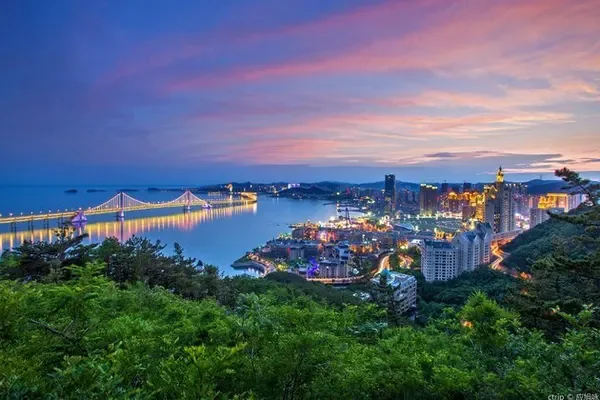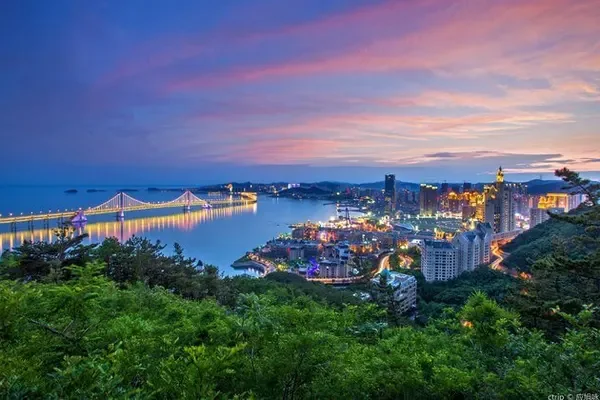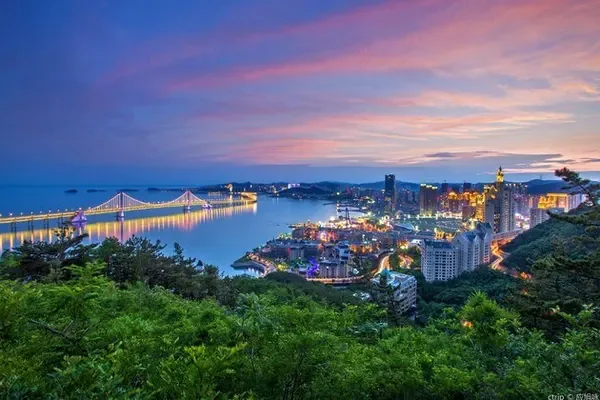The No. 1 Drug Market in the World
Walking in the streets and alleys of Anguo, you can see it everywhere
"The grass arrives in Anguo to make medicine, and the medicine passes through Qizhou to produce fragrance"
This is not only a compliment to Anguo's traditional Chinese medicine processing skills
It is also a national event for its medicinal materials market
weighty recognition
Why is Anguo considered "the best drug market in the world"?
If traced back to the source
When there is a deep connection with a temple
King Pitong
Anguo, known as Qizhou in ancient times, is one of the famous distribution centers of traditional Chinese medicinal materials in the history of our country. It is known as "the capital of medicine" and "the first medicine market in the world". The prosperity of the Anguo medicine market originated from the Yaowang Temple. Anyone who participates in the medicine market must pay homage to the Temple of the Medicine King.
Yaowang Temple is located in the south of Anguo City (formerly Nanguan). It was built in the Jianwu period of the Eastern Han Dynasty, and a new temple was built in the Taiping Xingguo period of the Northern Song Dynasty. Since then, it has been expanded and repaired by generations, bringing together the architectural features of the Song, Ming, and Qing dynasties. The architectural structure is rigorous and integrated. It is currently the largest ancient temple group in China to commemorate the historical medical saints. It has a history of thousands of years and is a national focus. cultural relics protection unit.
The Yaowang Temple was originally the "Shenge of Piwang", and Pitong, one of the twenty-eight generals under Emperor Guangwu Liu Xiu of the Han Dynasty, was worshiped in the temple. Pitong, King of Medicine, was a native of Xindu (now Jizhou, Hebei) in the Western Han Dynasty, and once served as the prefect of Quyang (now Jinzhou, Hebei). Pi Tong assisted Liu Xiu in conquering the world. He was brave, loyal, and resourceful, and made immortal contributions to the establishment and defense of the Eastern Han Dynasty. He was honest in government, proficient in medical theory, often practiced medicine among the people, won the support of the people, and was buried in Nanguan of Anguo after his death.
Liu Yong's inscription
The Yaowang Temple complex covers an area of about 3,200 square meters, facing east to west, and has a well-organized structure. It consists of more than ten buildings, including the archway, the Horse Hall, the Bell and Drum Tower, the Yaowang Tomb Pavilion, the Stele Room, and the Hall of Ten Famous Doctors. The plaque of "Yaowang Temple" hanging above the mountain gate was inscribed by Liu Yong, a scholar of Dongge University in Qianlong period of Qing Dynasty.
The wooden archway in front of the temple gate is 8.4 meters high, with four pillars and three floors, hip roof, glazed tile surface, bucket arches and cornices, lifelike reliefs, beautiful wooden flower patterns, and exquisite Soviet-style color paintings, with an elegant and dignified style. On the front of the archway, the inscription "Appears in Hebei Province", and on the back, the inscription "Fengjia Southern Song Dynasty".
There are a pair of stone lions on both sides of the archway. Outside the stone lions stand two iron pillar flagpoles, which are 24 meters high and each weighs 15 tons. "Iron trees and double flags are fighting with light, and the gods are full of shadows and virtues towering to the sky." There are wind chimes hanging on the iron flagpole, ringing in the wind, giving people a distant and solemn feeling.
Entering the main entrance is the Hall of Horses, with two red and white war horses on the north and south sides. Legend has it that the medicine king "Xian Ling" rode a horse to go to the doctor for treatment.
The Yaowang Tomb Pavilion is in the middle courtyard of the Yaowang Temple. The tomb is in the style of a pavilion, with wooden arched ridges and glazed tile roofs. The shape is exquisite and unique, full of national characteristics. The inscription on the tombstone reads "The Tomb of King Zhao Huixian, Ling Zhao Huixian of the Ming Dynasty".
The tomb of the King of Medicine is located before the main hall in the temple. This kind of construction pattern is rare. The tombstone of the King of Medicine in the Tombstone Pavilion is a jujube wood piercing through the dragon flower stele. Few of the steles are made of wood, and even fewer are on the top of the tomb.
On the north and south sides of the tomb pavilion are the Hall of Famous Doctors, with statues of ten famous doctors in ancient times. The North Hall is dedicated to Hua Tuo, Sun Lin, Zhang Zihe, Zhang Jiebin, and Liu Hejian;
The main hall of the King of Medicine is the main building of the Temple of the King of Medicine, with a magnificent appearance. There is a statue of the King of Medicine, with a yellow robe and a golden face, and has the auspicious style of "bringing happiness and health to the world". There are eight civil servants and generals on the left and right of the statue of the King of Medicine, which adds to the power of the King of Medicine. The apse is the sleeping hall of the King of Medicine, with a statue of the King of Medicine in casual clothes in the middle, and statues of the two wives of the King of Medicine (known as Grandma of the King of Medicine) and maidservants on both sides. The murals in the apse are the relics of the Ming Dynasty, which are still clear and precious.
Cornerstone of the drug market
Anguo, known as Qizhou in ancient times, is one of the famous distribution centers of traditional Chinese medicinal materials in the history of our country. The establishment of the Yaowang Temple has contributed to the continuous inheritance of traditional Chinese medicine industry in Anguo. Since ancient times, the Yaowang Temple has been a place where the sages of the medicine world pay homage, and it is also a place for the people to pray for blessings and safety. The incense in the Yaowang Temple is growing day by day, gradually forming an incense meeting. Drug dealers from all over the country brought medicinal materials to Anguo for trading, and the incense fair evolved into a temple fair for medicinal materials trading. "Two meetings every year, five in spring and seven in autumn", gradually formed the largest distribution center for Chinese medicinal materials in the country, known as "the capital of medicine" and "the best medicine in the world". city". The prosperity of the Anguo medicine market originated from the Yaowang Temple. Anyone who participates in the medicine market must pay homage to the Temple of the Medicine King.
"Thousands of miles away, the wheels and hooves converge, galloping to Qizhou". This is exactly the scene in the late Ming and early Qing Dynasties when drug dealers from all over the country were attracted by the Anguo Pharmaceutical Market. In the mid-Qing Dynasty, the "Thirteen Gangs" and "Five Congresses" and other business gangs emerged, especially the emergence of the pharmaceutical management organization Anketang, which marked that the development of Anguo's pharmaceutical market entered a prosperous period.
According to the records of "Anguo City Chronicles", Anketang is the earliest recorded pharmaceutical management organization in Anguo. It was built in the Daoguang period of the Qing Dynasty. That is to say, when a local drug dealer has a dispute with a foreign businessman, no matter whether the local person is justified or not, he must first apologize to the merchant to show respect and protection for the foreign businessman.
"During the late Qing Dynasty and the early Republic of China, every time the temple festival was held, drug dealers from all over the country would bring their precious medicines to the temple fair. There are more than 1,000 species, and nearly 2,000 drug dealers participated in the transaction.” Yu Pannian, director of the Local Chronicle Office of Anguo City, described the grand occasion at that time, saying: “Vehicles of various sizes carrying medicines from outside came in an endless stream, stretching for several miles. Like a mountain, full of courtyards."
According to the 23rd year of the Republic of China (1934), "Hebei Monthly", Volume 2, Issue 12, "County Survey" records: "The Anguo pharmaceutical market in the territory is extremely developed, and it is a famous pharmaceutical market in northern China. Every April 28, the King of Medicine Temple fairs are very prosperous, and winter is the time for buying and selling medicinal materials, merchants gather, and the transaction volume is said to be brisk."
The prosperity of the market has led to the perfection of medicinal materials processing and processing techniques. "Qizhou Four Wonders of Processing" (Hundreds of Betel Nut, Cicada Wing Qingxia, Yunpian Antler, and Pound-made Rhino Horn), its "knife method" is the best in the industry. crown. Many Chinese patent medicine workshops can produce more than 500 varieties such as pills, creams, Danjiao, tincture and wine. The prosperity of the Anguo medicine market in the Qing Dynasty is also reflected in the close connection with Tongrentang. Tongrentang, as an imperial pharmacy, has a branch in Anguo, and its medicinal materials are mainly purchased in Anguo. With the status, influence and strength of its royal pharmacy, Tongrentang controls the price of some medicinal materials, so there is a saying that "Tongrentang will not open the market if it is not available".
second to none
In 1992, Anguo City made the "300 million project" decision, and built the largest professional market for Chinese herbal medicines in the country - Oriental Medicine City within two years. Entering the 21st century, the Anguo Pharmaceutical Industry, which has gone through vicissitudes, is once again full of vitality. Dongfang Pharmaceutical City operates more than 2,000 varieties, with a daily passenger flow of 20,000 person-times, a daily throughput of more than 1,000 tons, more than 400 market operators, and more than 4,000 merchants (booths). During this period, merchants from South Korea, the United States, Japan and other countries came to Anguo to invest and start businesses.
In 2012, Hebei Province proposed to comprehensively promote the upgrading of the traditional Chinese medicine industry, build a strong province of traditional Chinese medicine, and made a major decision to build the capital of traditional Chinese medicine in Anguo. Eight years later, Anguo has changed into a gorgeous butterfly, with "three districts" (green recycling industrial zone, warehousing and logistics business zone, and health and health culture zone), "three bases" (Chinese medicine research and development base, Chinese medicine export base, and Chinese medicine planting demonstration base) ), the "three systems" (planting standard system, circulation standard system, quality traceability system) development strategy as the core, covering planting, scientific research, processing, extraction, storage, inspection, trading and other investment development carriers have been formed.
On March 17, 2015, the "Agreement on Investment and Construction of Anguo City Medicine City Health and Health Park Project Cooperation Investment Agreement" was officially signed. According to the content of the agreement, the project plans to cover a total area of about 3,300 mu, divided into three parts: Yaodu Ancient Town, Health Theme Park, and Ecological Community, with a total investment of 11 billion yuan. After the completion of the project, it will center on Yaowangmiao Square, supplemented by a number of characteristic commercial, catering, and cultural projects, and further promote and inherit the history and culture of Anguo TCM Capital.
"The Yaowang Temple is inseparable from Anguo's traditional Chinese medicine industry. With the Yaowang Temple, Anguo has a thousand-year history of pharmaceutical industry. Anguo has always made great strides on the road to building a modern medicine capital." Anguo City Culture, Radio, Television and Tourism Bureau Director Wang Zhi said.
Today, the planting area of Chinese herbal medicines in Anguo has been maintained at more than 150,000 mu all year round. It is the "Hometown of Chinese Herbal Medicines" named by the State Council and the first batch of demonstration counties in the country for planting and pollution-free production of Chinese herbal medicines. It provides nearly 53.4 million kilograms of Chinese herbal medicines annually, accounting for Save more than 70% of the output of medicinal materials. The professional market operation of Chinese herbal medicines radiates all over the country and more than 20 countries and regions such as Europe, America, and Southeast Asia. In 2019, the turnover of Chinese herbal medicines reached 35 billion yuan, making it one of the largest distribution centers and export bases of Chinese herbal medicines in the country.
Integrated development
From September 27 to 28 this year, Anguo City successfully held the Hebei Province Traditional Chinese Medicine Inheritance and Innovation Development Conference. Academicians of the two academies, masters of traditional Chinese medicine, experts and scholars, and well-known Chinese medicine entrepreneurs were invited to participate in the meeting to discuss the living inheritance, innovation, and development of Chinese medicine culture, to create a high-level platform for cooperation and innovative development of the Chinese medicine industry, and to boost Hebei Innovative development, green development, and high-quality development of the Chinese medicine industry.
In the future, in the east of Antai Street in Anguo and west of Yaowang Temple, a total of 1,200 acres of land overflowing with medicinal fragrance, a Ming and Qing style architecture will be born. The scenic spot includes "eight landscapes" such as statues, altars, and squares. The service industry that embodies the culture of traditional Chinese medicine includes supporting physiotherapy, traditional Chinese medicine, Miao medicine, Tibetan medicine, etc. In the scenic spot, you can also visit the king of medicine, visit the medicine city, appreciate the medicine flower, watch the medicine scene, eat the medicine diet, watch the medicine show, etc.
In addition, Anguo City also plans to build a healthy town in Atami. With the theme of traditional Chinese medicine culture and tourism, with the help of the Millennium Medicine City brand and the five major resource advantages of domestic rivers, geothermal heat, salt mines, and natural gas from the West to East, we will create a unique 5A-level leisure and health resort in the world and a comprehensive demonstration of traditional Chinese medicine health tourism base.
This scene has gone through all the splendor of the sky. After big ideas planning, generous layout, and high starting point construction, today Anguo Traditional Chinese Medicine has more connotation and wider extension, showing the development trend of the whole industry. The construction of the capital of traditional Chinese medicine has also achieved a continuous strategic upgrade from the provincial governor's project, the joint construction of the province and the ministry to the Beijing-Tianjin-Hebei coordinated development demonstration zone.
Today, the Yaowang Temple has become a cultural symbol that embodies the civilization of Anguo's pharmaceutical industry. Anguo is continuing the glory of the pharmaceutical industry in accordance with the functional positioning of the national-level traditional Chinese medicine industry gathering capital, a place of health and culture, and a green, ecological and livable city. , Strutting forward with head held high.
Traveling through the millennium, dreaming back to the present
This temple is still glowing and the "No. 1 Medicine Market in the World" is still in front of us. Let's go with the Huimin Card while the winter sun is warm~



